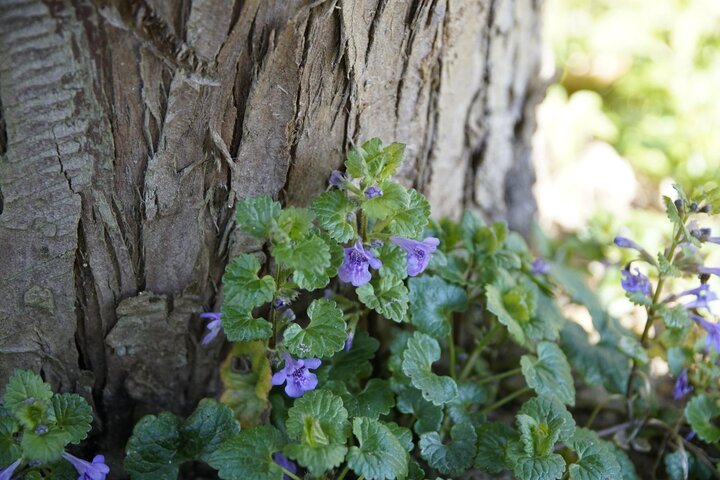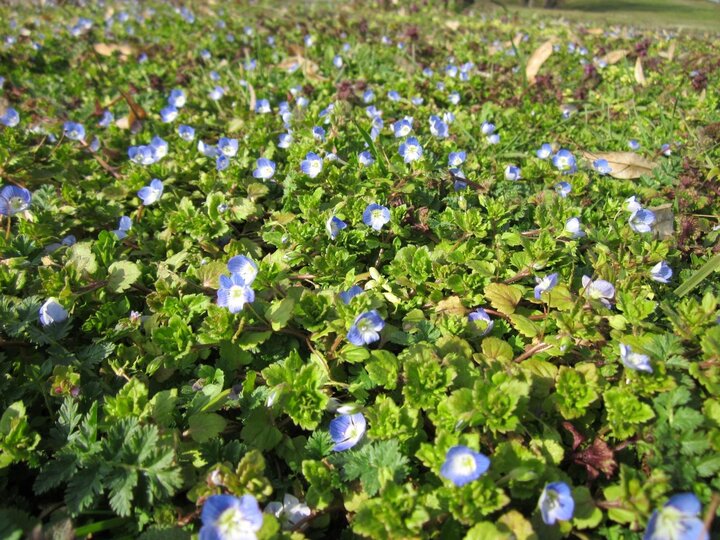Sarah Browning, Nebraska Extension Educator

Foxtail is a common summer annual weed found in many landscapes. Image from Pixabay.com.
About this time every summer weeds begin to drive us crazy; they love the heat of mid-summer! Here are some tips to help maintain your sanity and create the best long-term strategy to minimize weeds in your landscape.
Even though weeds are most problematic now – this is one of the worst times of year to get good control with herbicides. Weeds don’t translocate herbicides into their roots well at this time of year, which limits effectiveness. Often weed leaves are killed, but not the crown or roots. So they quickly recover and grow back.
Today we’ll discuss four main weed groups - summer annuals, winter annuals, perennial broadleaf weeds. Each has specific timing, strategies and methods to follow for the fewest headaches on your part and the best control. I’ve listed them below in the order you should use to attack them from now through fall.
Summer Annuals
Preemergent herbicides are commonly applied in spring to kill weed seeds as they germinate, targeting common annual weeds such as crabgrass, foxtail, knotweed and spurge. Typically, the spring application is made in the last week of April or first week of May.
However, weed seed doesn’t just germinate in spring, it continues to germinate all summer long. A second application is necessary in mid-summer to provide continued weed control after your spring preemergent is gone.
Each preemergent herbicide has a specific residual period based on the active ingredient and product formulation. Time your second application on the product you used.
In general, the following herbicides have these approximate lengths of residual control.
- Prodiamine (Barricade) – 16 weeks
- Dithipyr (Dimension) – 9 weeks
- Pendimethalin (Pendulum) – 8 weeks
Do not apply more than the maximum seasonal rate of any preemergent herbicide, as specified on the product label.

Perennial Broadleaf
September is the best time of year to control tough perennial weeds in the landscape. At this time of year, they begin moving carbohydrates from the leaves down to the roots for winter storage. If herbicides are applied now, they are transported to the roots along with the carbohydrates killing the entire plant instead of just the leaves. And even if the chemical doesn't completely kill the weed, the plant goes into winter in a weakened condition and is much more susceptible to winter kill. Finally, the potential for 2,4-D and dicamba herbicide drift damage to non-target species is lessened in fall.
Post emergent weed control is best achieved with quinclorac, carfentrazone, sulfentrazone, mecoprop, dicamba, 2,4-D or arsenical compounds (DSMA, MSMA). Many products available at garden centers or home stores will contain a mixture of 2 or more of these herbicides. Combination or 3-way products, as they are sometimes called, are more effective at killing weeds because of the different mode of action each chemical contributes to the mix.
- Quinclorac – grassy weeds, broadleaf weeds
- Carfentrazone – broadleaf weeds
- Sulfentrazone - grassy weeds, broadleaf weeds, sedges
- Mecoprop - broadleaf weeds
- Dicamba – broadleaf weeds
- 2,4-D - broadleaf weeds
- DSMA or MSMA - grassy weeds, and some broadleaf weeds
These products are selective and won't damage grass, but use them with caution in landscape beds since accidental spraying or spray drift can damage shrubs and ornamental plants. Quinclorac is particularly effective at controlling wild violets.
Consider adding a spreader-sticker to your tank mix for even better control. Spreader-stickers are additives that help the chemical you apply spread over the weed leaf surface and adhere to it better. When you're trying to control weeds with waxy leaf surfaces, like wild violets, a spreader-sticker is particularly helpful. Look for products like Earl May's Turbo Spreader Sticker.
When targeting difficult weeds, don't expect 100% control with one herbicide application. Two or three herbicide applications, 2-3 weeks apart will usually be necessary. After making the herbicide application, don't mow for 2-3 days to allow the plants to take in the chemical.

Winter Annuals
Winter annual weeds, like annual bluegrass, goosegrass, field speedwell and henbit, germinate in the fall, overwinter as a small rosette of foliage, and begin growing again in early spring. They complete their life cycle and go to seed in spring or early summer. Gardeners usually want to control these weeds in spring when they are blooming, but that’s not the best strategy. Since winter annuals are blooming by the time gardeners notice them, they usually will or have already produced seed by the time herbicides kill them. If you had these weeds in your landscape this spring, they should have disappeared by now.
Winter annual weeds are best controlled in September. Mulch and an application of pre-emergent herbicide are the best method of control for a weed-free landscape next spring. Or kill them right after they germinate by hoeing or spot-spray young plants with post emergent herbicide, such as those containing 2,4-D, quinclorac or triclopyr.
Weed Identification
As you can tell, knowing exactly what weed you are trying to control and its lifecycle - summer annual, perennial or winter annual - is critical. If you need help identifying weeds, contact your local Nebraska Extension office, or submit pictures of your weed to the Nebraska Extension Digital Diagnostic Network. Weeds experts will help with identification.bsp;
Images:
- Foxtail. Image by Pixabay
- Ground ivy is a common perennial, weed. Image from Pixabay.com.
- Field speedwell is a common winter annual weed. Image from Pixabay.com
Search Our Archive
Associated Video
Turf Weeds
UNL Extension Turfgrass Specialist Zac Reicher talks about controlling common turf weeds.